What is Powerline: A Guide to Powerline Adapter in 2022
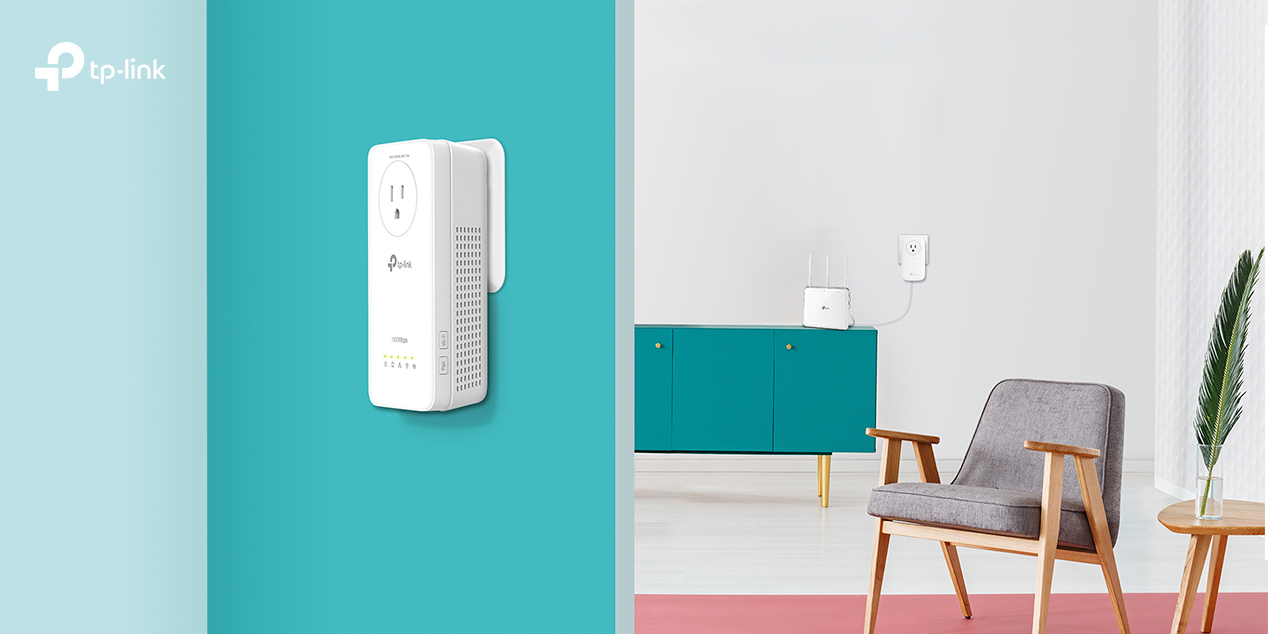
The need for Powerline to extend home network is growing. In this post, we’ll be explaining what Powerline is, who it’s for, and help users choose a suitable Powerline device.
- What is Powerline?
- Who needs the Powerline?
- Features of the Powerline
- How does Powerline Work?
- What are the Differences between Powerline and Range Extender?
- How to Set Up the Powerline Network?
- How to Choose a Suitable Powerline for Your Home?
- Conclusion
- FAQ
Who needs the Powerline?
Powerline is ideal for people who live in big houses with thick walls and multiple floors as well as people who desire easy setup of a new network.
Some people may choose range extenders to expand their router’s network. However, sometimes thick walls and floors block the WiFi signals amplified by the range extender and still leave dead zones in your home.
With TP-Link’s Powerline adapters, there's no need for drilling or wire installation. You can turn your home’s electrical wiring into a high-speed network with ease. Every single adapter acts as a portable LAN port, transmitting a wired and wireless network to any place in your home where there's an outlet, regardless of physical obstacles.
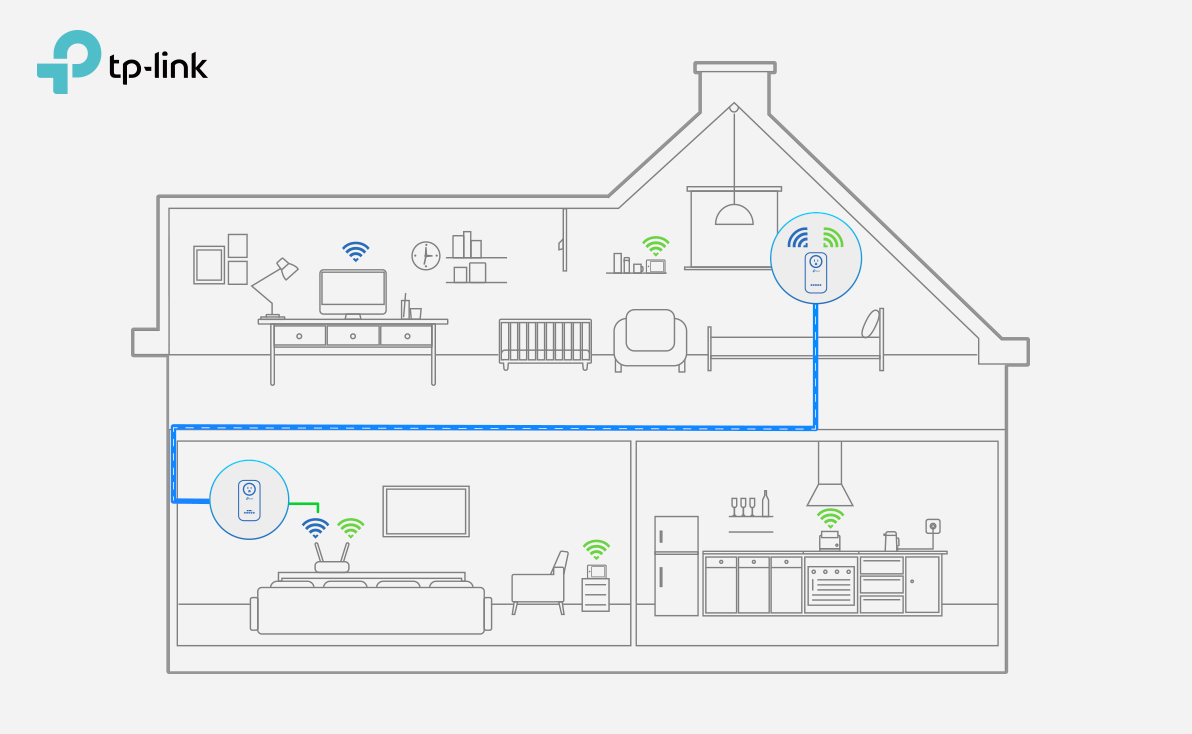
Features of the Powerline
High Powerline Speeds
Using advanced HomePlug AV/AV2 technology, Powerline products provide stable and high-speed data transmissions where there is a power outlet. Stream in HD, game online, and download large files without interruption thanks to reliable Powerline links.
Wi-Fi Speeds
Most wireless Powerline devices support wireless the AC Standard. You can effortlessly extend a wireless network to share with all your WiFi devices in your home or office.

Ethernet Ports for Wired Connections
With Ethernet ports, Powerline adapters can run multiple high-speed and reliable wired connections at the same time for devices like smart TVs, PCs, and game consoles.
Extra Power Socket for Additional Devices
The integrated power socket means Powerline can be used like a traditional power outlet. Simply plug in your device
or extension lead as though it were a normal wall socket.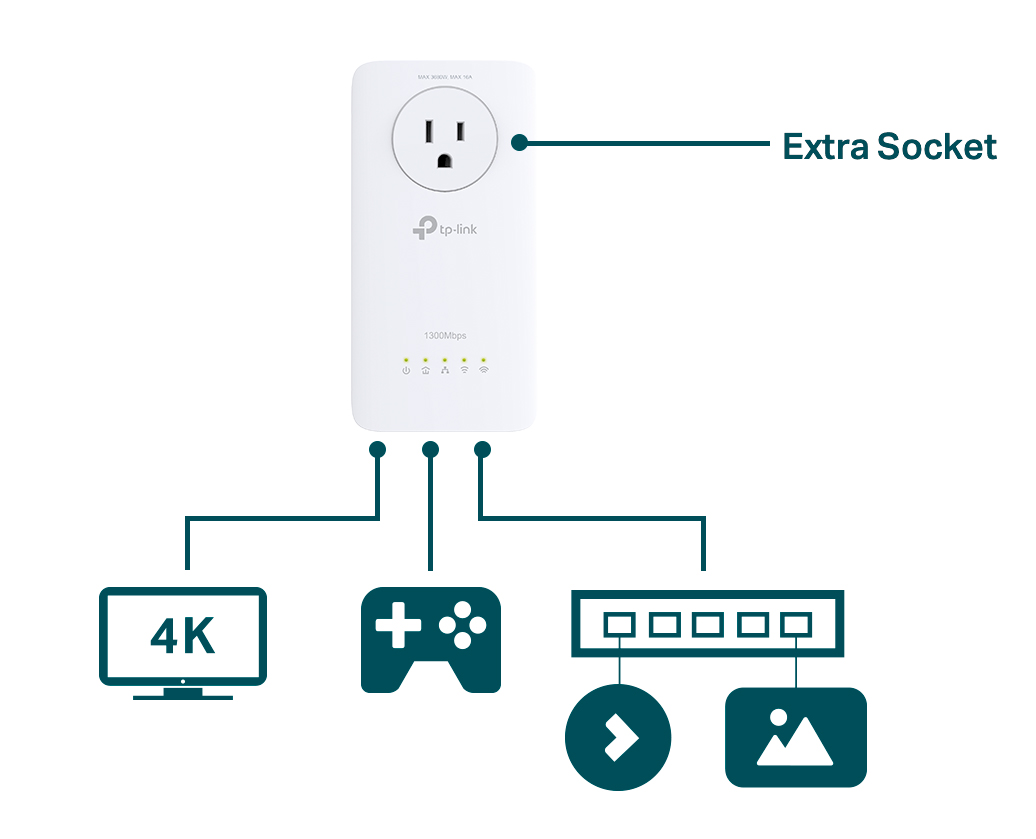
How does Powerline Work?
Powerline adapters and extenders must be deployed in a set of two or more and be connected to the same electrical circuit. Using electric power conductors as the medium to send data, the adapters follow the HomePlug standard developed by the HomePlug Powerline Alliance. The currently used standards are HomePlug AV and HomePlug AV2.
HomePlug AV achieves a physical signal rate of up to 600 Mbps. It provides more bandwidth than previous standards for entertainment applications such as HDTV and home theater. HomePlug AV offers an easy, cost-effective solution to enable HDTV at home without new wiring. However, the latest bandwidth-hungry applications now ask for more bandwidth than is provided by HomePlug AV.
This brings us to HomePlug AV2, which operates with other HomePlug standards. HomePlug AV2 delivers Gigabit physical speeds thanks to its MIMO technology that establishes multiple simultaneous connections to improve data transfer rates, stability, and coverage—ideal for 4K Ultra HD video, online gaming, and Internet of Things. Home connectivity for the ever-increasing number of network devices is so much easier now.
| Standard | Signal rate | Application |
| HomePlug AV | Up to 600 Mbps | HDTV, home theatre |
| HomePlug AV2 | Gigabit physical speed | 4K Ultra HD video, multi-room IPTV, online gaming |
What are the Differences between Powerline and Range Extender?
| Range Extender | Powerline Adapters | |
| Strengths |
|
|
| Limitations |
|
|
How to Set Up the Powerline Network?
Want to quickly set up a Powerline network and enjoy your network everywhere at home? TP-Link offers a very simple way of creating a Powerline network.
1. TP-Link Plug and Play
Simply plug a Powerline adapter into a power outlet and connect it to your router’s LAN port via an Ethernet cable. Then plug in another adapter or extender into a power outlet on the same electrical circuit. When the Powerline LED turns on, enjoy your newly extended network. Experience simple network management with our user-friendly tpPLC app, tpPLC Utility, and web interface.
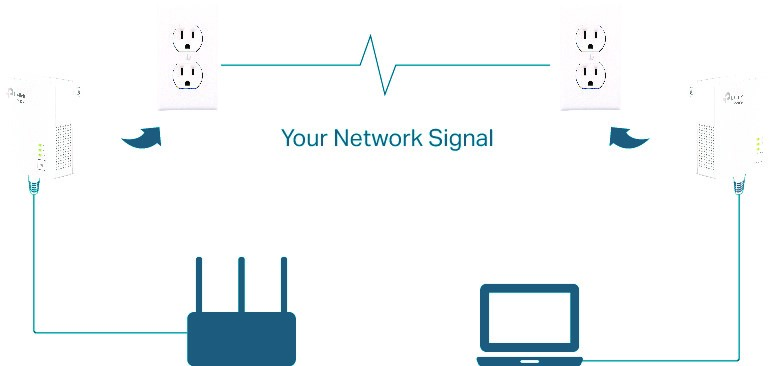
2. Add a new device to the powerline network
Press and hold the pair button on the existing adapter for a second. Then, within 2 minutes, press the pair button of the new Powerline device. When the Powerline LED turns on, the new device has been successfully added to your Powerline network.
How to Choose a Suitable Powerline for Your Home?
Unlike range extenders, Powerline devices primarily extend a wired internet connection. But some Powerline devices can also extend a wireless network. To choose a suitable Powerline device according to your needs, you’ll need to consider the following:
|
Parameters |
TP-Link Powerline Devices |
|
|
Powerline Speed |
Fast |
4 series eg: TL-WPA4220 KIT, TL-PA4010P KIT; |
|
Super fast |
7 series eg: TL-WPA7510 KIT, TL-PA7017P KIT; 8 series eg: TL-WPA8631P KIT, TL-PA8010P KIT; |
|
|
Ultra fast |
9 series eg: TL-WPA9610 KIT, TL-PA9020P KIT; |
|
|
Wi-Fi Speed (for wireless extenders) |
None (wired only) |
eg: TL-PA9020P; |
|
Fast |
eg: TL-WPA4220 KIT; |
|
|
Ultra fast |
eg: TL-WPA8631P KIT; |
|
|
Passthrough (with extra socket) |
No |
eg: TL-PA9020 KIT; |
|
Yes |
Don't lose an outlet, eg: TL-WPA8630P KIT; |
|
|
Ethernet Ports |
Number of ports |
1 port, eg: TL-WPA9610; |
|
2 ports, eg: TL-PA9020P; |
||
|
3 ports, eg: TL-WPA8631P; |
||
|
Speed of ports |
Fast Ethernet Port, eg: TL-WPA4220 KIT; |
|
|
Gigabit Ethernet Port, eg: TL-PA9020P KIT; |
||
|
Powerline with OneMesh™ |
Yes |
eg: TL-WPA8631P; |
|
To be released |
All TP-Link wireless Powerline devices will support OneMesh™ in the future. |
|
Note: OneMesh™ forms a unified mesh network with your router for seamless roaming while moving around your home. More devices supporting OneMesh™ will be available soon. Check a full list of OneMesh™ devices at TP-Link OneMesh™.
Go to TP-Link Powerline to select a suitable Powerline device for you.
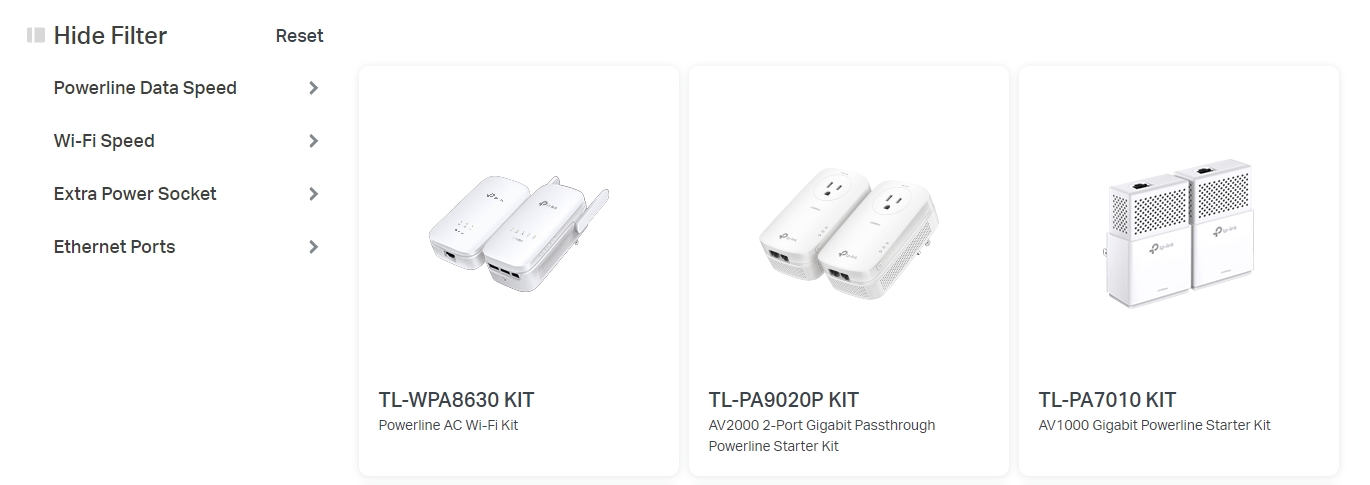
Conclusion
Powerline offers a quick and easy way to extend your home network. They’re affordable and don’t require you to install any extra cables in your home. Click TP-Link Powerline the to see all Powerline products.
FAQ
1. How many Powerline adapters can be added to the same network?
It depends on the type of your powerline device. You can refer to "Max nodes in one powerline network" to find your model and the corresponding maximum number of devices.
2. Are TP-Link powerline products compatible with the powerline products of other brands?
For adapters of other brands, if they adopt the same standard, they should also be compatible with TP-Link powerline devices. However, they might have different ways to pair and configure. It would be much easier to use adapters from the same brand.
3. Can I use powerline devices across the floors in my house?
If these floors use the same electrical circuit with no filters, then powerline devices can work across the floors.
4. Do powerline devices have requirements on outlets?
Powerline devices rely on the electrical circuit to transmit data, while the power strips usually used may filter high-frequency signals. Therefore, plugging powerline devices on a power strip might affect the performance. We recommend plugging all powerline devices on the wall.
*Maximum Powerline signal rates are the physical rates derived from HomePlug AV/AV2 specifications. Actual Powerline data throughput and Powerline range are not guaranteed and will vary as a result of network conditions and environmental factors, including electrical interference, volume of traffic and network overhead, AFCI circuit breaker, and Powerline being located in a separate circuit.
*Maximum wireless signal rates are the physical rates derived from IEEE Standard 802.11 specifications. Actual wireless data throughput and wireless coverage are not guaranteed and will vary as a result of network conditions, client limitations, and environmental factors, including building materials, obstacles, volume and density of traffic, and client location.
*Compatible with all HomePlug AV and AV2 Standard Powerline adapters. This product may not be compatible with routers or gateways with firmware that has been altered, is based on open source programs, or are non-standard or outdated.





